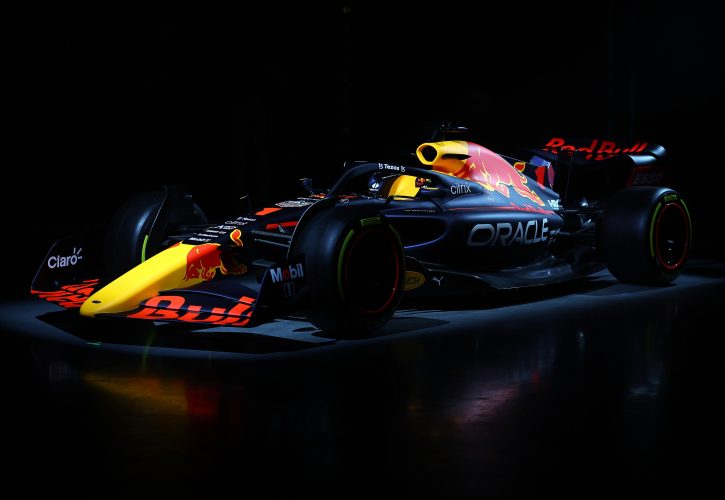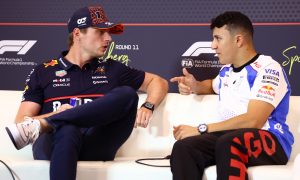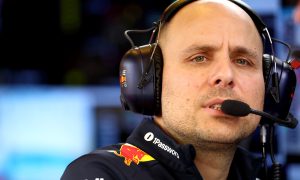
Red Bull Racing technical director Pierre Wache is predicting a significant boost in straight line speed for Formula 1's new generation of cars.
Red Bull unveiled on Wednesday a very approximate mock-up of its new-spec RB18 based on the 2022 model showcased by Formula 1 last summer.
The sport's new regulations aim to promote closer racing by significantly reducing the downforce loss resulting from the whirlwind of dirty air that flows off a car's rear wing and stagnates in its wake, which inevitably upsets the aerodynamics of the following car and hinders a driver's ability to follow closely and to overtake.
To achieve this change, F1 has revived the concept of ground effect aerodynamics, whereby the greatest amount of downforce is generated by a car's underbody rather than by its wings.
Only time will tell if F1's new rules will fulfil their intended premise, but Red Bull's Wache says a by-product of the changes will be a big increase in top speed for this year's cars.
"What they wanted to do is clearly to create and generate the downforce from the ground compared to before - where it was generated by the ground but also mainly by the front wing, rear wing and the body work," said the Frenchman as he described the thinking behind Red Bull's RB18, speaking alongside chief technical officer Adrian Newey and chef engineer Paul Monaghan.
"It will affect, for sure, the ride of the car, the mechanical grip and the drag of the car.
"This generation of downforce is quite efficient, and this type of car should be a lot quicker on the straight at these levels of downforce."

©RedBull
Newey was initially critical of F1's new regulations when they were released, the Briton believing they were too prescriptive.
But F1's most successful designer admits the changes are the greatest overhaul seen by the sport in almost forty years.
"It's been a very unusual process," said Newey. "It is a huge regulation change, the biggest one we've had since 1983, when the Venturi cars were banned and flat-bottomed cars were introduced."
This season, F1 has switched to 18-inch wheels, and the change has led to a diverse set of effects as explained by Monaghan.
"The nose box is certainly longer. So wherever you put your split for front of chassis into the structure at the front, that structure has got a lot longer, the overhang is greater," explained RBR's chief engineer.
"[With the wheels] the thinking is road relevance, in that a majority of road cars now have relatively big wheels, but they also come with pretty low profile tyres.
"We've come up on the wheel size to 18 inches as a line in the sand. It's certainly put a bit of weight onto the car. The tyre is bigger overall, so it has a fairly significant aerodynamic effect.
"And then you've got the characteristics of the big tyre to try and understand as well. We've sort of got reasonable knowledge of last year's ones. It's a bit of a new drawing board for us, isn't it?"
Gallery: The beautiful wives and girlfriends of F1 drivers
Keep up to date with all the F1 news via Facebook and Twitter






